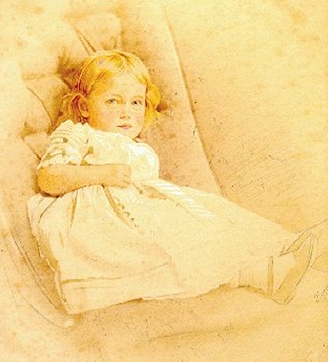
John Hood was a pioneer photographer and the father of commercial photographer and photojournalist Sam Hood, whose collection of prints and 44,800 negatives forms an invaluable pictorial resource at the State Library of NSW. For more than five decades before his death in 1953 Samuel John Hood chronicled the lives of ordinary Australian people: Bondi Beach bathers, lost children at the Easter Show, department store cashiers, Depression relief gang workers, revellers at Luna Park. The Australian Maritime Museum also holds over 9000 of Sam’s images of ships and their passengers and crews, dating from the 1890s. For a time Sam worked in his father’s studio on Glebe Rd and the birth of one of his sons, William, was registered in Glebe in 1899.
Sam’s father John Riley Hood was born in Derbyshire, one of four sons of Elizabeth and Samuel Hood (1807-1900), an iron founder specialising in ornamental steel castings and metal friezes, foliated grilles and screens for verandas and balconies. Samuel had business interests in Paris and London; as President of the Winter Bathers’ Club it was his early morning duty to break the ice with a hatchet and take the first dip in Hyde Park’s Serpentine Lake.
After attending school in Bath, John was sent to the College Imperial in Paris where he studied drawing and painting, lived in the Latin Quarter and became fluent in French. Back in London, he worked as an artist and retoucher with photographers Elliott & Fry before opening his own studio near London Bridge. At a time when artists relied on natural light this was on the top storey, and Hood was in trouble with the law when he dislodged from his skylight an avalanche of snow which fell onto passers-by on the footpath below. He also escaped a libel suit by a husband, irate over two contrasting showcase prints of his wife labelled ‘untouched’ and ‘touched’.
In the 1860s John Hood migrated to South Australia to take up a six-year contract as an oil and watercolour retoucher with Townsend Duryea’s Adelaide Photographic Company. Among his commissions was a coloured portrait of the visiting Duke of Edinburgh in 1867, and his Black to Move, an oil painting of boys shooting crows, was a Society of Arts prize winner in 1870. The following year he married Martha Mary, eldest daughter of Ulrich Hübbe (a reformist lawyer and behind-the-scenes author of the Torrens system of land registration) and set up his own studio in Glenelg as a miniaturist and specialist in ‘portraits of deceased or absent relatives’. He was a part-time teacher at the Adelaide School of Design, an exhibitor at the 1887.
Adelaide Jubilee Exhibition and a contributor to the journal The Lantern, drawing direct onto lithographic limestone, carried to his office in solid blocks by his eldest son.
Martha Hood died in 1881 at age 32. She had given birth to four boys: Samuel John 1872, William Harrison 1874, John ‘Jack’ Ulrich 1876 and Thomas ‘Tom’ Courtney 1878. In 1882 her widower married a young widow Ruth Wright née Dollman and three more children were born in Adelaide: Martha Mary 1882, Alexander Dolman [sic] 1883 and Frederick William 1887. In 1883 John Hood was employed by the Oceanic Publishing Company as one of the many artists creating engravings (from sketches and photographs) for the monumental The Picturesque Atlas of Australasia commemorating the centenary of European settlement and initially sold by subscription in 42 parts. John Hood’s work probably involved a good deal of travelling around the country with his camera;his Sydney base was in Duke St Woolloomooloo. By 1889 when the atlas project was finished and daughter Dorothy Ruth was born, the Hoods were in Leichhardt St Glebe. After that they moved to Glebe Rd where for the next decade or so John Hood had a studio at a couple of different addresses in the block bounded by Bridge Rd and Denham St (now an extension of St Johns Rd). Here he photographed, painted portraits and miniatures and renovated old oil paintings. He also taught French and worked as an ecclesiastical artist. By 1903 he had moved to 108 Wigram Rd.
John and Ruth and daughters Martha, a shop assistant, and Dorothy, a clerk, then settled in Mosman where Ruth died on 27 August 1919. John died at what is now Macquarie Hospital on 27 May 1926.
Sources: Australian Dictionary of Biography: Ulrich Hübbe entry; Births, deaths, marriages indexes NSW, SA; Cato, Jack The Story of the Camera in Australia 1955; Cemetery records; Davies, Alan Sydney Exposures 1991; Electoral rolls; Sand’s Directories; Sydney Morning Herald.









One comment. Please add yours.
Thanks for your article Lyn about my forbear John Hood. I hadn’t known about the snow falling on pedestrians in London. Also, his addresses when he lived in Glebe. John was my gr. grandfather and Sam Hood, photographer, my great uncle. I’ve done a lot of research back to Joseph Hood, John Hood’s grandfather back in Stafford. They were wealthy iron founders. Thanks for your research Lyn. At first I wondered if you were one of the clan. Regards, Judy Frenda,